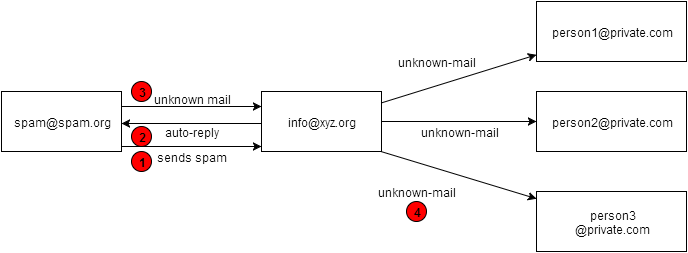I have the following mail setup:
This is what happens at the numbered stages:
- some spam-address (which actually does not exist) sends spam to [email protected]
- the [email protected] has an auto-reply configured which is sent automatically to [email protected] (which does not really exist)
- since [email protected] does not really exist, the [email protected] receives a Mail Delivery System message from the Mailer-Daemon (the daemon is omitted from the picture for the sake of clarity). The Mail Delivery System message looks like this: https://i.sstatic.net/bROIo.png
- My issue here is, that this Mail Delivery System mail gets forwarded to [email protected] (etc...) because I have configured a mail forward from [email protected] to [email protected], etc...
What can I do to avoid step 4, that is, the auto forward from the mail delivery system error message to the forward mail addresses ([email protected])
One solution would be to disable the Mail Delivery System messages at the email-server. However, I think this is not really smart, because sometimes, I would like to receive these error messages, in case they are useful.
